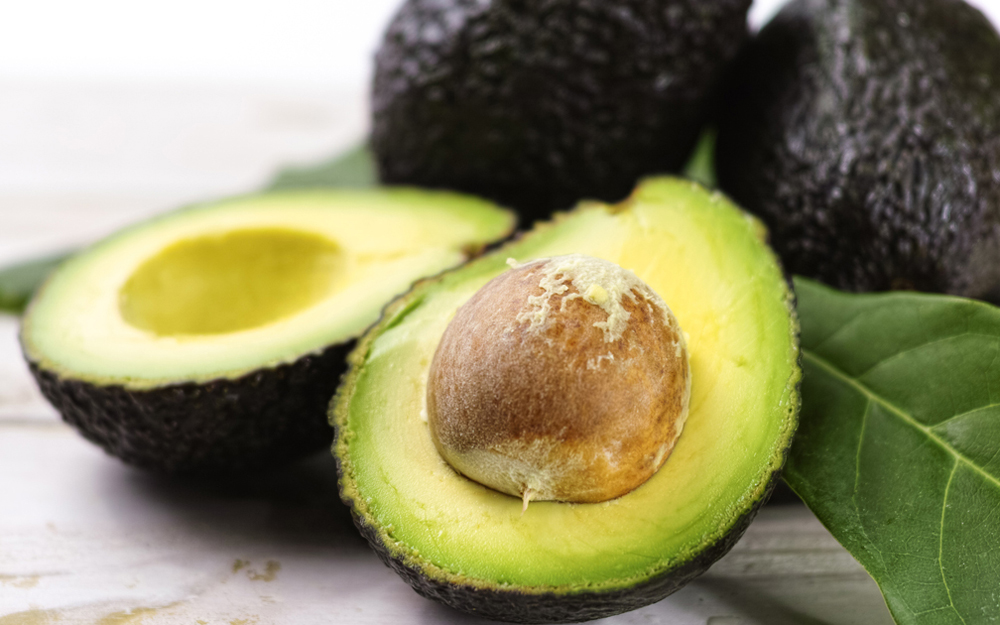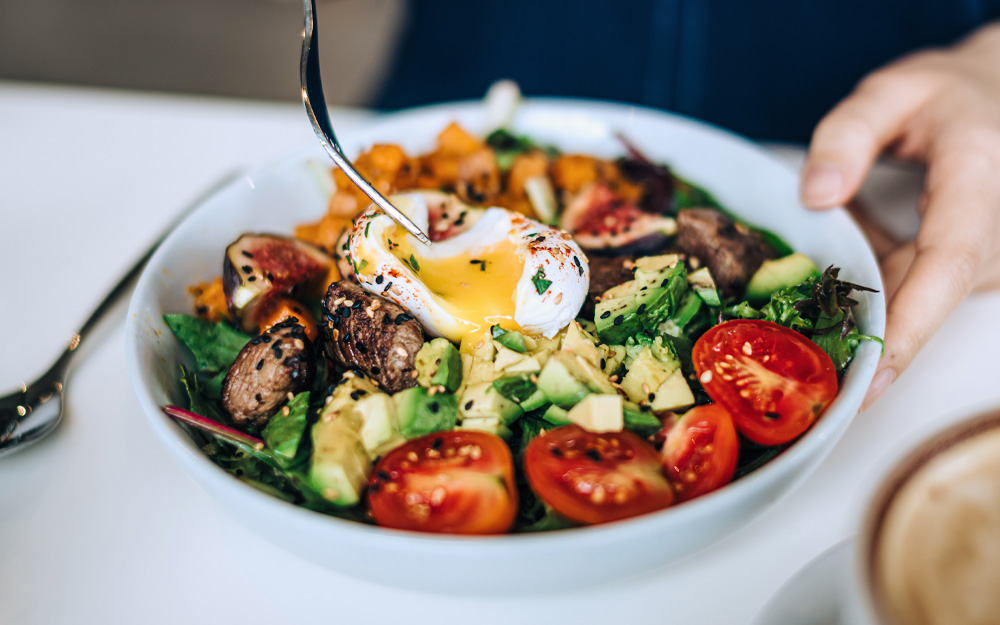What You Eat Can Add Years to Your Life
Date
April 23, 2024

Date
April 23, 2024
Credits
Medical providers featured in this article
In Brief
{{cta-block}}
From broccoli sprouts and microgreens to mushroom powders and ancient grains, people are craving information about which foods can help protect them against disease. While these so-called superfoods boast plenty of perks, there’s no single food that can help you live longer (if only it were that easy).
“If there was some magic food linked to longevity, believe me, we would know,” said Martha Gulati, MD, a cardiologist at Cedars-Sinai.
{{providers}}
Instead, since America’s biggest killers—cancer, heart disease, arthritis, depression and Alzheimer’s disease—have all been linked to chronic inflammation, the cornerstone of eating for longevity is reducing inflammation in the body.
Fortunately, there’s much you can do to lighten your inflammatory load, starting with what you put on your plate each day—and what you leave on grocery store shelves.
"The approach with the most evidence behind it is the Mediterranean diet, which is a whole foods diet high in fruits, vegetables, whole grains, fatty fish, nuts and seeds," said Gulati. It looks something like this:
Foods and Beverages to Enjoy
- Fiber-rich foods: Fiber is critical for gut and immune health, and to stave off obesity. "Unfortunately, most Americans aren’t getting enough fiber," said Gulati. To get your daily due (35 milligrams for men, 25 milligrams for women), load up on foods such as oats, pears, berries and beans. Each of these foods and their many high-fiber cousins, are also packed with other important nutrients. Berries, for example, are loaded with antioxidants that help protect cells against DNA damage.
- Cruciferous vegetables: Broccoli, brussels sprouts, cabbage and other cruciferous vegetables boast plenty of fiber, but they’re also packed with disease-fighting compounds that help with cell repair and renewal. In fact, studies show that eating four or five servings of cruciferous veggies each week may help reduce the risk of cancer and other chronic diseases.
- Fermented foods: While probiotic supplements get a lot of attention for their purported ability to populate the gut with healthy bacteria, according to Clinical Research Dietitian LJ Amaral, eating plenty of probiotic-rich foods (and the prebiotics that probiotics need to thrive) is a better way to go. "Think about prebiotics as the mulch and probiotics as the flowers," she said. "You need the prebiotics for the probiotics to grow and flourish." Prebiotics include artichokes, cauliflower, garlic, kale, onions, leeks, oats—and the list goes on. Probiotics can be found in kimchi, kefir, sauerkraut, and of course, yogurt. Just opt for plain yogurt over the flavored varieties, which are typically loaded with sugar.
"If there was some magic food linked to longevity, believe me, we would know."
- Healthy fats: Unsaturated fats, including those found in olives (and olive oils), nuts and seeds (and nut and seed butters), avocados and fatty fish, like salmon, not only help keep cholesterol levels in check, but they also help the body absorb critical fat-soluble vitamins, including vitamins A, D, E and K. Nuts may be especially beneficial. "Nuts of all types are good sources of protein, minerals and healthy fats," Amaral said. "Just watch your portion sizes, since a small handful can add up to 200 calories or more depending on the nut."
- Herbs and spices: Herbs and spices may take up little space in the diet (or in your stomach), but they come with myriad health benefits. Ginger can help calm nausea, oregano can help hijack harmful bacteria, and turmeric and curcumin can help kick your immune system into high gear. Don’t forget garlic and onions, both of which contain powerful immune-boosting compounds.
- Water: Water is required for every organ and tissue in the body. It helps move toxins through the digestive tract and also carries oxygen to your organs and tissues. With water, immune-boosting nutrients can get to the cells where they’re needed most. Aim to drink about half of your body weight in ounces daily (so, if you weigh 150 pounds, aim to sip 75 ounces of water daily).
- Tea: Teas of all types, but especially green, help curb inflammation and reduce the risk of cancer, heart disease and diabetes. Loaded with disease-fighting polyphenols, including one called epigallocatechin gallate (EGCG), green tea has been linked to a reduced risk of several cancer types. For best results, brew your tea at home and skip the bottled teas found in grocery stores, which are often laced with sugar and other not-so-healthy ingredients.
Foods and Beverages to Restrict
- Processed foods: Refined foods, such as cookies, cakes, white bread and sweets, not only spike blood sugar levels, but they also increase inflammation.
- Saturated fats: Processed meats, fried foods and processed cheeses linger in the body, converting fat cells into active hormone factories that release inflammatory proteins into the bloodstream.
- Soda: Soda is full of sugar and void of nutrients. Drinking soda on a regular basis can lead to weight gain and increase the risk of chronic diseases ranging from osteoporosis to diabetes.
- Alcohol: According to the World Health Organization, there is no safe level of alcohol consumption. If you’re not ready to go dry completely, stick to the government guidelines of no more than one drink per day for women and two drinks per day for men.
The bottom line: To keep your body and mind functioning at their best, eat whole, unprocessed foods, especially vegetables, low-sugar fruits and fiber-rich whole grains. "But rather than focus on one specific superfood, try to eat a full rainbow of foods," said Amaral.
Choose fruits and vegetables with brilliant hues—dark purple eggplant, bright blueberries, deep red cherries, vivid carrots and vibrant leafy greens. But don’t shun white foods. Cauliflower, onions, garlic and shallots are nutrient powerhouses, too.
"You might even try to get two or three different colors on your plate at each meal and snack,” Amaral said. "The take-home message is: Eat the plants, and eat a variety of them."





